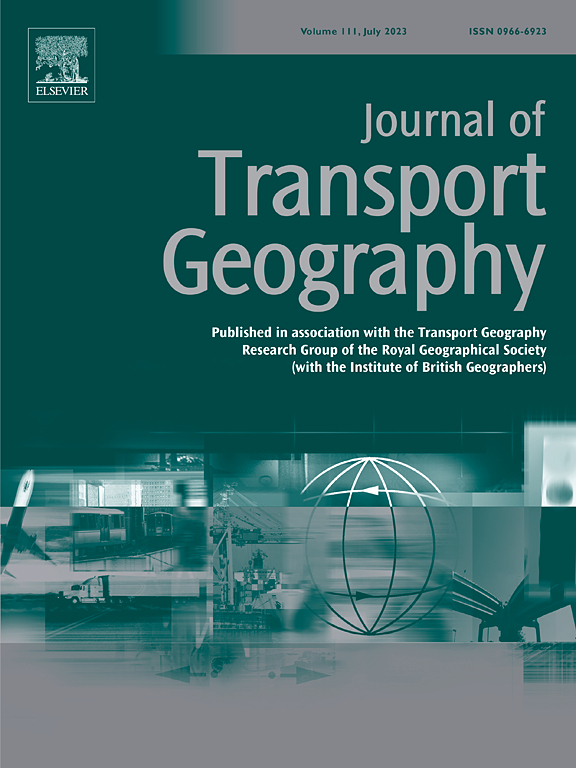Unlocking the nonlinear TOD-metro ridership relationship: A novel machine learning approach embedding spatiotemporal heterogeneity
IF 5.7
2区 工程技术
Q1 ECONOMICS
引用次数: 0
Abstract
Machine learning approaches to unlocking the TOD-metro ridership relationship have attracted great attention due to the strong capability of such approaches to handle the underlying nonlinearity and complexity in this relationship. Considering the peculiarities of spatiotemporal heterogeneity in metro ridership, however, one prominent challenge remains unsettled, namely, the issue that traditional machine learning algorithms are designed to be ‘aspatial’ and thus only produce global estimations. In this paper, a geographical and temporal random forest regression algorithm (GTRFR) is developed, which extends the traditional random forest (RF) as a disaggregation of a number of local submodels and computes an individual random forest regression for each location i at time j using neighboring observations across time and space. It further employs this algorithm to unlock the nonlinear TOD-metro ridership relationship in the case of the Hangzhou metropolitan area. The results show that the GTRFR outperforms the traditional RF in explaining the TOD-metro ridership relationship. Particularly, the nonlinear TOD-metro ridership relationship is unlocked from two major aspects: (1) the relative importance of TOD structural factors across time and space and (2) spatially and temporally varying threshold effects in the effects of the TOD structural factors. The findings portray a much broader picture of the mechanisms underlying the TOD-metro ridership relationship. This paper contributes to the argument that accounting for spatiotemporal heterogeneity should be beneficial to applying machine learning algorithms to transport geography.
解锁非线性TOD-metro客流量关系:一种嵌入时空异质性的新型机器学习方法
由于机器学习方法处理这种关系中潜在的非线性和复杂性的能力很强,因此解锁TOD-metro客流量关系的机器学习方法受到了广泛关注。然而,考虑到地铁客流量时空异质性的特点,一个突出的挑战仍未解决,即传统机器学习算法被设计为“无空间”的问题,因此只能产生全局估计。本文提出了一种地理时间随机森林回归算法(GTRFR),该算法将传统随机森林(RF)扩展为多个局部子模型的分解,并利用相邻的时间和空间观测值计算时间j时刻每个位置i的单个随机森林回归。在此基础上,以杭州都市圈为例,进一步利用该算法解算出TOD-metro的非线性客流量关系。结果表明,GTRFR在解释TOD-metro客流量关系方面优于传统RF。特别是,从两个主要方面揭示了TOD与地铁客流量的非线性关系:(1)TOD结构因素在时间和空间上的相对重要性;(2)TOD结构因素影响中的时空变化阈值效应。这些发现描绘了一幅更广泛的关于交通工具和地铁乘客关系的潜在机制的图景。本文支持这样一种观点,即考虑时空异质性应该有利于将机器学习算法应用于交通地理。
本文章由计算机程序翻译,如有差异,请以英文原文为准。
求助全文
约1分钟内获得全文
求助全文
来源期刊

Journal of Transport Geography
Multiple-
CiteScore
11.50
自引率
11.50%
发文量
197
期刊介绍:
A major resurgence has occurred in transport geography in the wake of political and policy changes, huge transport infrastructure projects and responses to urban traffic congestion. The Journal of Transport Geography provides a central focus for developments in this rapidly expanding sub-discipline.
 求助内容:
求助内容: 应助结果提醒方式:
应助结果提醒方式:


